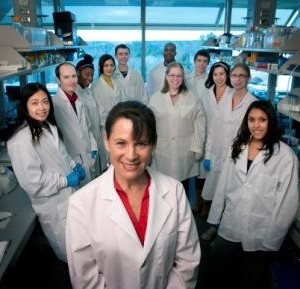A team of scientists from the University of Cambridge have recently developed a new way of transferring energy from organic to inorganic semiconductors that is projected to significantly increase the efficiency of today’s standard inorganic solar cells.
This team of researchers says that this new method can harvest the energy carried by particles known as ‘dark’ spin-triplet excitons with nearly 100% efficiency, opening the way for hybrid solar cells that may be able to outstrip the efficiency limits of current PVs.
The scientists were successful in harvesting the energy of triple excitons. Excitons are in excited electron state whose energy is often harvested in solar cells. The team was also able to transfer the energy from organic to inorganic semiconductors.
This is remarkable because researchers and scientists alike were only able to do this process in spin-single excitons.
In the process of synthesis, plants can only convert around 10% of the light they get from the sun into usable hydrogen to initiate reaction. But a team of researchers was able to get laboratory efficiency by achieving 44.7%, thus breaking the world record.
The use of hybrid material
This is made possible by using a hybrid material for this new type of cell. The ultimate goal is actually 50% conversion. It could be possible by using this new hybrid material which uses both organic and inorganic substances. This could dramatically boost solar efficiency that will even exceed 95%.
The team of scientists at the University of Cambridge was led by Maxim Tabachnyk. The results of their experiments were published in the journal, Nature Materials.
When solar cells absorb photons, they produce particles called excitons. Excitons facilitate the interaction between matter and light. There are two types of excitons – the spin-singlet and the spin-triplet.
Harvesting the spin-singlet excitons is easy using solar cells. But spin-triplets are optically ‘dark’ therefore, they are difficult to capture. However, these latter types can produce two electrons for each photon, thereby maximizing efficiency.
Excitons play an important role in the process of photosynthesis in the natural world. Light photons are absorbed by the pigments and produce excitons, which carry the absorbed energy throughout the plant. This is the same process utilized in solar cells.
How this process worked previously
In traditional inorganic semiconductors like silicon, when a photon is absorbed, it causes the formation of one free electron which can be extracted as current. But in pantacene, a kind of organic semiconductor, when a photon is absorbed, two electrons are formed.
However, these electrons are hard to pin down because they are bound within ‘dark’ triplet exciton states.
“The key to making a better solar cell is to be able to extract the electrons from these dark triplet excitons,” says Maxim Tabachnyk, the lead scientist of the project. Tabachnyk is also a Gates Cambridge Scholar at the University’s Cavendish Laboratory
“If we can combine materials like pentacene with conventional semiconductors like silicon, it would allow us to break through the fundamental ceiling on the efficiency of solar cells,” he adds.
“Combining the advantages of organic semiconductors, which are low cost and easily processable, with highly efficient inorganic semiconductors, could enable us to further push the efficiency of inorganic solar cells, like those made of silicon,” says Dr. Akshay Rao, a member of the research team.

